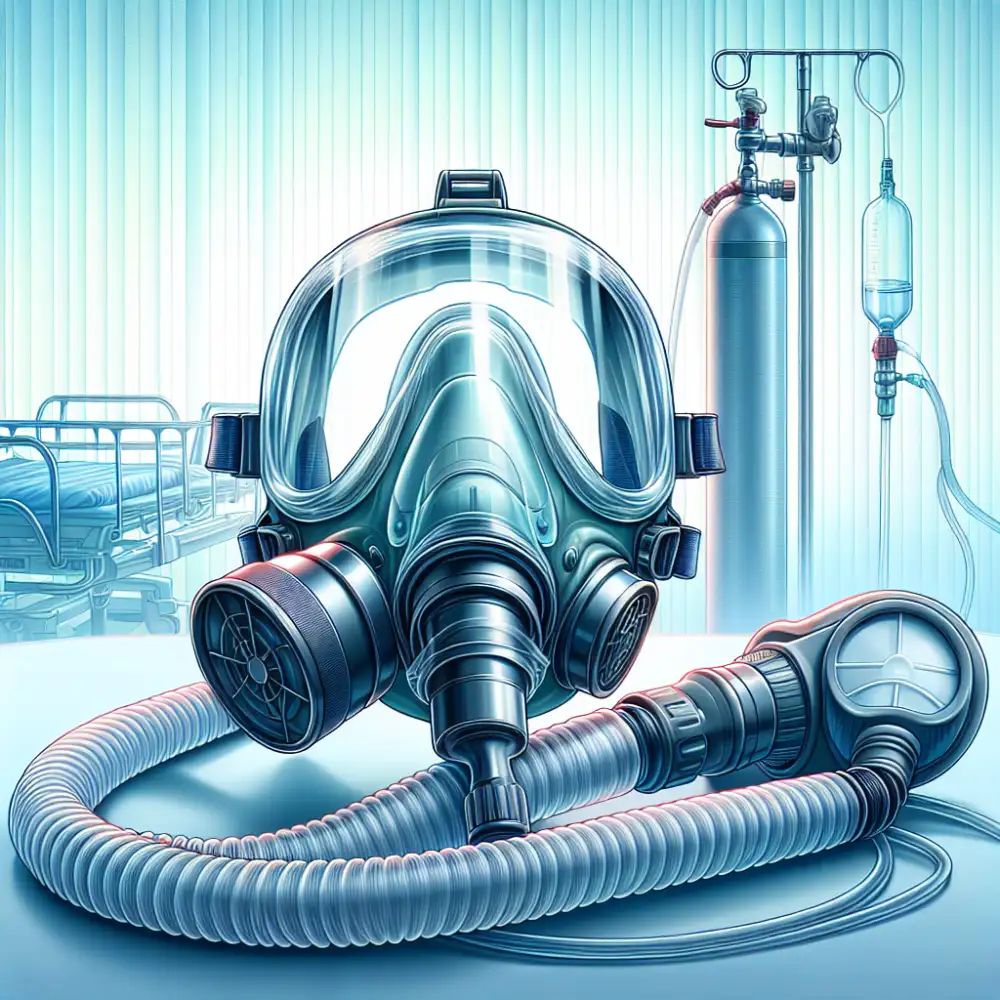Oxygen Gas Masks: Your Lifeline in a Respiratory Emergency

Oxygen Mask Types
There are several types of oxygen masks, each designed for a specific purpose.
Simple face masks cover the nose and mouth. They deliver oxygen concentrations between 35% and 60% with flow rates of 6-10 liters per minute. These masks are commonly used for short-term oxygen therapy.
Venturi masks are more precise in delivering oxygen. They use a system of color-coded adapters to control the oxygen concentration, ranging from 24% to 50%.
Non-rebreather masks provide the highest oxygen concentration possible, up to 90%, without intubation. They have a reservoir bag attached and are used in emergencies or for patients with severe breathing difficulties.
Partial rebreather masks are similar to non-rebreather masks but allow some exhaled air to mix with the oxygen. This type of mask is used when a patient needs a high concentration of oxygen but can still breathe on their own.
Oxygen nasal cannulas are small tubes that fit into the nostrils and deliver oxygen directly into the nose. They are more comfortable for long-term use and allow for talking and eating while wearing them. However, they deliver a lower concentration of oxygen, typically between 24% and 44%.
An oxygen mask: a silent testament to the fragility of life, a reminder that our next breath is not promised, but a gift to be cherished.
Elias Vance
Oxygen Mask Benefits
Oxygen masks deliver concentrated oxygen, helping to increase the amount of oxygen in your blood. This can be particularly beneficial if you have a health condition that causes low blood oxygen levels, such as COPD, pneumonia, or COVID-19. Oxygen therapy can help alleviate symptoms like shortness of breath and improve your overall well-being. It's important to note that oxygen therapy should always be used under the guidance of a healthcare professional. They can determine the appropriate oxygen flow rate and duration for your specific needs.
Oxygen Mask Risks
While oxygen masks can be lifesaving, it's important to be aware of potential risks:
Oxygen toxicity: Breathing pure oxygen for extended periods can damage the lungs and other organs. This is usually only a concern with prolonged use or in certain medical conditions.
Skin irritation: The mask itself can irritate the skin, especially if worn for a long time. This can be minimized by ensuring the mask fits properly and by taking breaks from wearing it when possible.
Fire hazard: Oxygen is highly flammable. It's crucial to avoid open flames and smoking while using an oxygen mask.
Dependence: In some cases, prolonged use of oxygen therapy can lead to dependence, where the body becomes reliant on supplemental oxygen. This is why it's important to follow medical advice regarding oxygen use.

Choosing an Oxygen Mask
Choosing the right oxygen mask is crucial for effective oxygen therapy. Consult with your healthcare provider to determine the appropriate type and flow rate for your needs. Consider factors such as comfort, fit, and ease of use. Nasal cannulas are suitable for low-flow oxygen, while oxygen masks are necessary for higher concentrations. Look for masks with adjustable straps and soft, comfortable materials. Ensure the mask seals properly to prevent oxygen leakage. If you have any questions or concerns about choosing or using an oxygen mask, consult your healthcare provider for personalized advice.
Using an Oxygen Mask Safely
If you need to use an oxygen mask, stay calm and follow these steps. First, place the mask over your nose and mouth, ensuring it fits snugly. Then, slip the elastic band over your head to secure it in place. Breathe normally. If the mask has a bag attached, make sure it inflates and deflates slightly with each breath. If it doesn't, adjust the flow rate until it does. If you're using an oxygen mask for a child, make sure it fits properly and that they keep it on. Monitor them closely. Remember, oxygen is flammable, so avoid open flames or sparks while using an oxygen mask.
Oxygen Mask Cleaning and Care
Oxygen masks are a vital part of respiratory therapy, delivering supplemental oxygen when needed. To ensure they function correctly and remain hygienic, proper cleaning and care are essential. Always consult the manufacturer's instructions for specific cleaning guidelines for your oxygen mask model. Generally, you should wash your hands thoroughly before handling the mask. Disassemble the mask carefully, separating the parts that can be cleaned with warm, soapy water. Rinse the mask components thoroughly with clean water and allow them to air dry completely before reassembling. Avoid using harsh chemicals or cleaners, as these can damage the mask material. Store your oxygen mask in a clean, dry place when not in use. Regular cleaning and proper care will help maintain the hygiene and effectiveness of your oxygen mask, ensuring that you receive the therapeutic benefits of oxygen therapy safely.
Published: 18. 06. 2024
Category: Health



